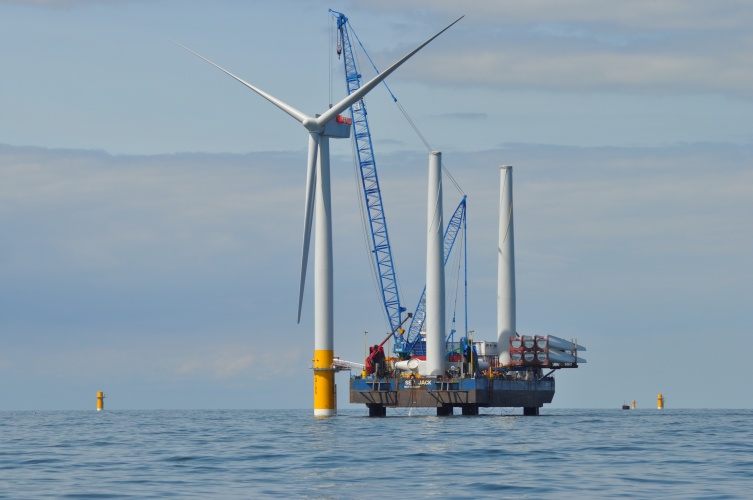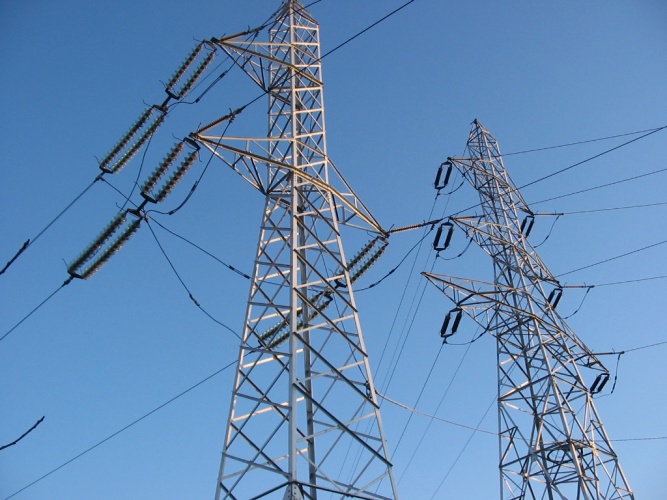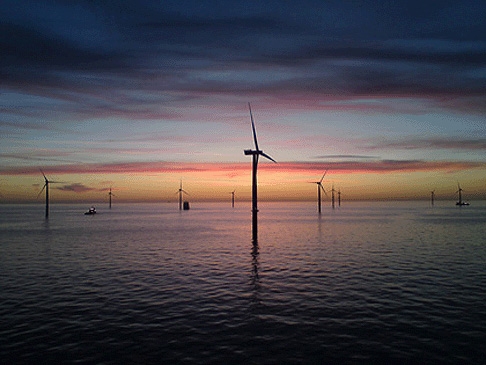 The UK grid must adapt to accommodate shifting energy infrastrucure, says Michael Smailes, Research Engineer for Offshore Electrical Infrastructures at the Offshore Renewable Energy (ORE) Catapult.
The UK grid must adapt to accommodate shifting energy infrastrucure, says Michael Smailes, Research Engineer for Offshore Electrical Infrastructures at the Offshore Renewable Energy (ORE) Catapult.
The UK is making huge strides in decarbonising its electrical system. In 2019, the government passed laws to bring all our greenhouse gas emissions to net zero by 2050. This was a real statement of intent as the UK became the first major economy to pass such legislation.
Battery boost for grid-scale storage
National Grid confirms first week of coal-free electricity since 1882
Offshore wind power will play a leading role in the drive for decarbonisation. It is already a significant part in the UK’s energy mix, with a capacity of almost nine gigawatts currently installed. The UK is currently the world’s largest offshore wind market and is expected to account for 35% of growth in the sector over the next five years. However, if net zero by 2050 is to be realised, there is still more to do.

The need for further investment in offshore wind has been recognised by the UK government, which earlier this year announced the pivotal Offshore Wind Sector Deal, a commitment that will see the UK sourcing up to a third of electricity with at least 30GW of generating capacity from offshore wind by 2030.
It is heartening to know that clean, green offshore wind will play a key role in our country’s energy mix, both now and in the future. However, if the UK is to truly harness this power, there are challenges that the industry needs to overcome.
All this increase and change leads to an inevitable impact on our infrastructure, and at the heart of this, the National Grid. With weather conditions dictating the amount of energy generated by wind power, the job of balancing the supply and demand of energy has become more challenging. Furthermore, with an increasing number of large, conventional power plants being taken offline, the frequency variations that inevitably occur due to mismatches between supply and demand of energy will become more significant. This is because these conventional power generators, such as coal, gas and nuclear, provide a consistent supply of power, helping National Grid meet its obligation to maintain the grid frequency between 49.5 and 50.5Hz.

As well as this, our grid was originally set up to harness large scale power generation from traditional sources, with infrastructure located near population centres. Offshore windfarms are located far away from populated areas, where grid infrastructure is weaker as it was not designed to handle large amounts of power. To ensure the grid is ready for the increase in clean energy coming from offshore wind, solutions need to be found.
One solution to this is electrical storage technology, which has the capability to stockpile energy and feed it to the grid when required, helping to maintain a consistent frequency and support infrastructure that can’t handle large amounts of energy. Battery storage is one technology being harnessed as it can be used to quickly stabilise grid frequency. However, it also has challenges to overcome, such as a lack of storage capacity leading to large costs of energy stockpiling levels, and the risk of overheating when exporting large amounts of power. There are other, more cost-effective solutions available that can store larger amounts of energy, such as hydrogen storage and compressed air energy storage, but these are less efficient than batteries and capacitors.
Businesses working in the electrical infrastructure sector are well aware of the challenges facing electricity storage. We have seen a range of firms, from SMEs to large corporations, developing a diverse range of solutions to cement this technology as a key part of our energy system. New innovations are emerging that could significantly change the way we store energy.
This abundance of ideas and technologies that could form potential solutions to energy storage challenges is fantastic. However, there will be hurdles to overcome - particularly with SMEs and start-ups - in bringing their products to market.
Funding is one obvious pitfall. Without investment, businesses cannot drive forward these innovations to a scale that becomes a feasible asset to our infrastructure. Access to systems that allow them to test their solutions can be scarce and without being able to test and validate products in real-world environments, they cannot gain the certifications needed to earn industry recognition, investment and customers.

If the UK is going to future-proof the grid and prepare it for the increased supply of offshore wind energy, support needs to be provided to these companies, giving them access to valuable industry insight and tools that can help them fund their solutions and put them to the test. Thankfully, these barriers have been recognised and avenues are now open to provide businesses with the vital support they need.
The ORE Catapult’s Grid Connection Support Series is one such service. Providing SMEs in the electrical infrastructure sector with expertise from global industry leaders, the series helps businesses understand how to enter new markets, form collaborations to stimulate growth and enhance areas of research. Personalised support for their projects including access to the latest tools to test their products is also available.
The UK’s electrical ecosystem is changing, and this change is only going to happen at an increasingly faster rate as the system continues to decarbonise. The energy industry can’t be reactive to this change; it must be proactive and ensure the tools and systems are in place to meet the nation’s electricity demands. Development of enhanced energy storage solutions is helping achieve this and nurturing the businesses developing the solutions of the future is vital. With the right support, the UK will have both a world-class electricity network, fit for a clean energy future, as well as a thriving market of industry-leading companies.
For more information on the Grid Connection Support Series, visit: https://ore.catapult.org.uk/stories/egrid/
Businesses can book their places by emailing: info@narecde.co.uk











Water Sector Talent Exodus Could Cripple The Sector
Well let´s do a little experiment. My last (10.4.25) half-yearly water/waste water bill from Severn Trent was £98.29. How much does not-for-profit Dŵr...